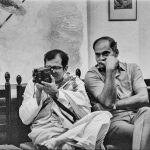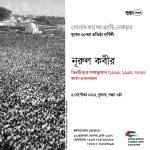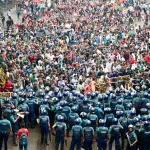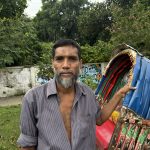By Ranjit Hoskote.
Art in America Column: Atlas Bombay (extract)
If you think of South Asian art today, you likely focus on the subcontinent?s metropolitan centers; on the gallery scenes in Bombay, New Delhi and Bangalore in India, and on artists? circles in Karachi and Lahore in Pakistan. Not surprisingly, it?s the artists who work in these populous, kaleidoscopic hubs of activity, transiting between there and West Europe and North America, who are most often selected by curators to embody the specificity of their place and time.
But where, I suspect, many curators are not yet looking is several thousand miles away from South Asia?s metropolitan centers, in the northeast of India and in Bangladesh, at the geographical edge where the South Asian subcontinent shades away into the Himalayan foothills of Tibet to the north and the tropical lushness of Burma and Thailand to the south.
Bangladesh has been bitterly contested by supporters of liberal democracy and those who prefer conservative military rule; democracy and dictatorship have alternated with one another since the country was born from the ashes of the former East Pakistan in 1971. Artists in these two situations, adjacent but divided, confront very similar questions of identity, belonging and choice.
Across the border in Dhaka, Bangladesh, the Drik organization acts as an umbrella for an impressive array of initiatives ranging from the archival to the activist. Among these is the Drik Picture Agency, an archive and visual information distribution system that does not simply preserve a nation?s traumatic memories but actively asserts their value against private amnesia and official suppression. Other projects include Chobi Mela, an annual international photography festival; Pathshala, one of South Asia?s leading academies for photojournalists; the Drik Gallery, which presents the work of young photographers; and, crucially, the Bangladesh Human Rights Network, which documents and investigates violations of civil and cultural freedoms.
The Drik Gailery was founded in 1989 by Shahidul Alam, a photographer, writer and activist, who was sensitized to the political and cultural problems menacing his country as a student in the UK in the 1970s. He returned and dedicated himself to confronting them, and to nurturing the fragile public sphere in Bangladesh.
DMC/Periferry, Drik and Britto are protean, tactically flexible and versatile; they can act variously as collaborative programs, information agencies, archives, curatorial missions, production stages, schools or pressure groups. In each case, the project was born from the desire of artists from a marginalized and disenfranchised region to participate in a sphere beyond their birth country or the region to which their citizenship assigns them. Importantly, though, these are not vehicles of careerist aspiration. They are heroic and pioneering efforts to create cultural infrastructure where none exists, to resurrect the technical and intellectual capacities for citizenship where these have been aborted through the abuse of power, and to bear testimony to a predicament in which the gesture of autonomy is threatened constantly by eclipse and erasure.
Atlas is a rotating series of columns filed from different cities around the world.
RANJIT HOSKOTE is a Bombay-based poet, cultural theorist and curator.
Ranjit Hoskote-Art in America column-October 2012





Leave a Reply
You must be logged in to post a comment.